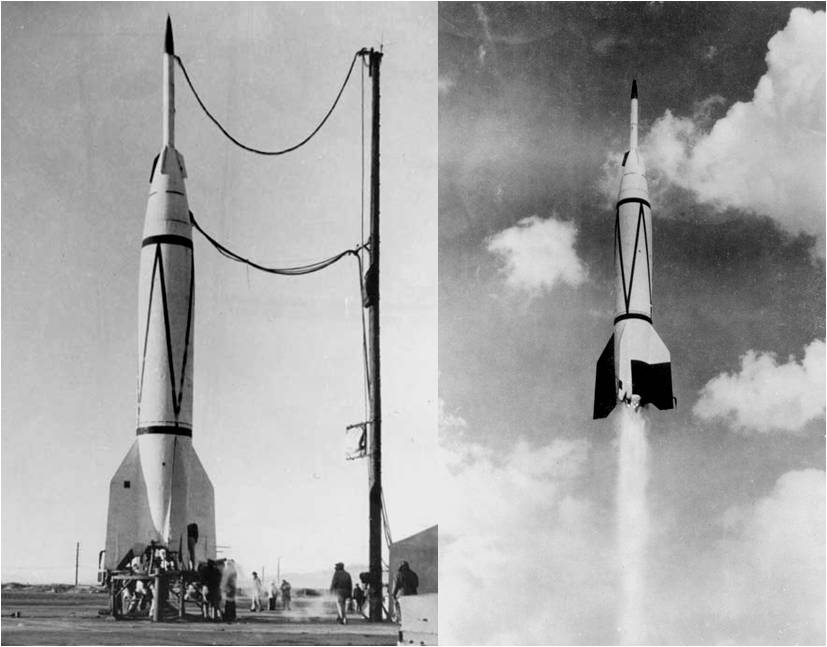Sixty-one years ago this week, a United States two-stage liquid-fueled rocket reached a then-record altitude of 250 miles. Launch took place from Pad 33 at White Sands Proving Ground (WSPG), New Mexico.
The Bumper Program was a United States Army effort to reach flight altitudes and velocities never before achieved by a rocket vehicle. The name “Bumper” was derived from the fact that the lower stage would act to “bump” the upper stage to higher altitude and velocity than it (i.e., the upper stage) was able to achieve on its own.
The Bumper Program, which was actually part of the Army’s Project Hermes, officially began on Friday, 20 June 1947. The project team consisted of the General Electric Company, Douglas Aircraft Company and Cal Tech’s Jet Propulsion Laboratory. A total of eight (8) test flights took place between May 1948 and July 1950.
The Bumper two-stage configuration consisted of a V-2 booster and a WAC Corporal upper stage. The V-2’s had been captured from Germany following World War II while the WAC Corporal was a single stage American sounding rocket. The launch stack measured 62 feet in length and weighed around 28,000 pounds.
Propulsion-wise, the V-2 booster generated 60,000 pounds of thrust with a burn time of 70 seconds. The WAC Corporal rocket motor produced 1,500 pounds of thrust and had a burn time of 47 seconds.
The flight of Bumper-WAC No. 1 occurred on Thursday, 13 May 1948. This was an engineering test flight in which the WAC Corporal achieved a peak altitude of 79 miles. Unfortunately, the next three (3) flights were plagued by development problems of one kind or another and failed to achieve an altitude of even 10 miles.
Bumper-WAC No. 5 was fired from WSPG on Thursday, 24 February 1949. The V-2 burned-out at an altitude of 63 miles and a velocity of 3,850 feet per second. The WAC Corporal accelerated to a maximum velocity of 7,550 feet per second and then coasted to an apogee of 250 miles.
With generation of a very thin bow shock layer and high aerodynamic surface heating levels, the flight of Bumper-WAC No. 5 can be considered as the first time a man-made flight vehicle entered the realm of hypersonic flight. Notwithstanding that achievement, its maximum Mach number of 7.6 would be eclipsed in July of 1950 when Bumper-WAC No. 7 reached Mach 9.
Three (3) more Bumper-WAC missions would follow Bumper-WAC No.5. While Bumper-WAC No. 6 would fly from WSPG, the final two (2) missions were conducted from an isolated Florida launch site in July of 1950.
The hot, bug-infested Floridian launch location, springing-up amongst sand dunes and scrub palmetto, would one day become the seat of American spaceflight. It was known then as the Joint Long-Range Proving Ground. Today, we know it as Cape Canaveral.
The Bumper Program successfully demonstrated the efficacy of the multi-staging concept. Bumper also provided valuable flight experience in stage separation and high altitude rocket motor ignition systems. In short, Bumper played a vital role in helping America successfully develop its ICBM, satellite and manned spaceflight capabilities.
While its historical significance, and even its existence, has been lost to many here in the 21st Century, the Bumper Program played a major role in our quest for the Moon. As such, it will forever hold a hollowed place in the annals of United States aerospace history.


